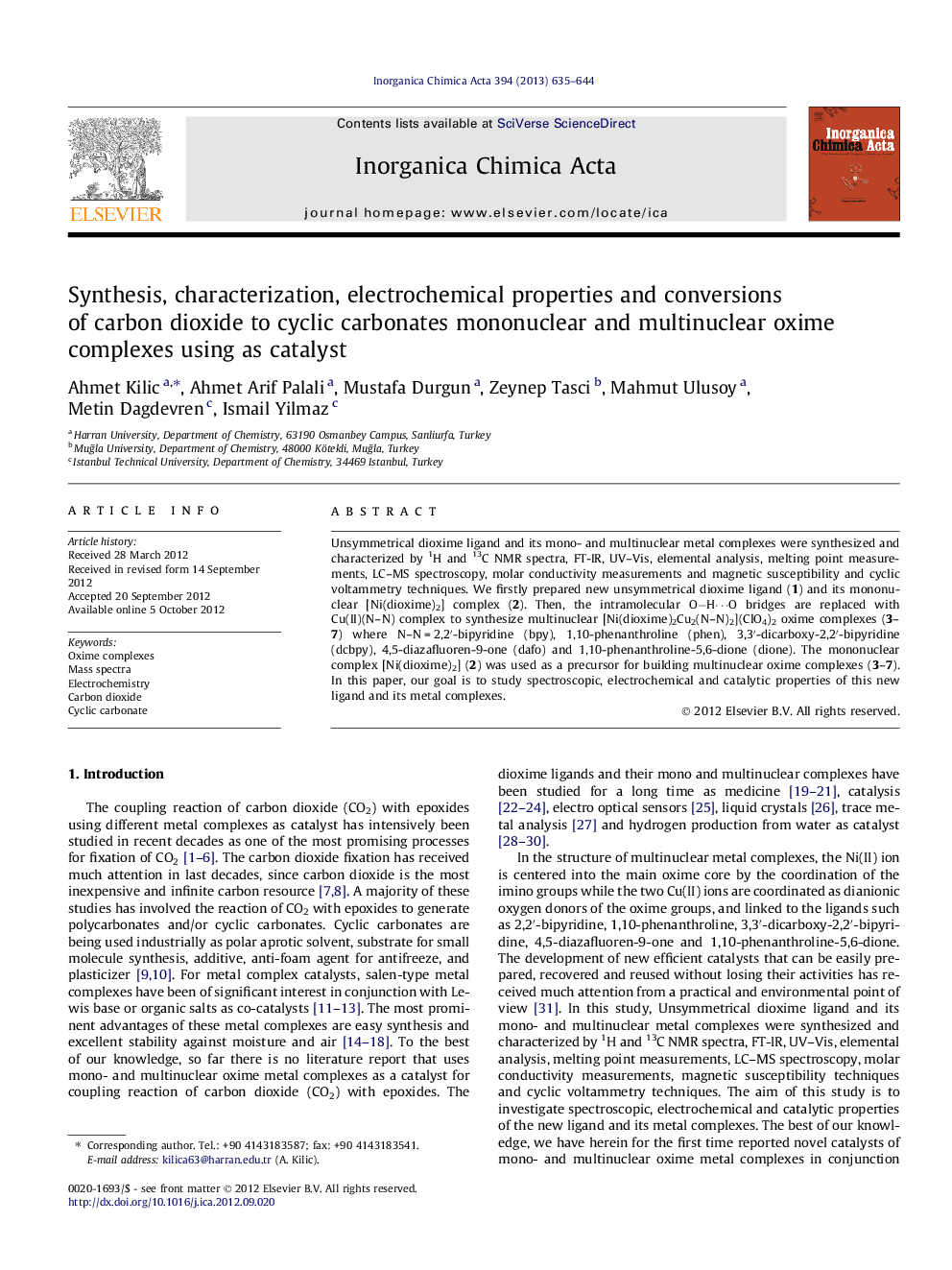| کد مقاله | کد نشریه | سال انتشار | مقاله انگلیسی | نسخه تمام متن |
|---|---|---|---|---|
| 1310629 | 1499193 | 2013 | 10 صفحه PDF | دانلود رایگان |

Unsymmetrical dioxime ligand and its mono- and multinuclear metal complexes were synthesized and characterized by 1H and 13C NMR spectra, FT-IR, UV–Vis, elemental analysis, melting point measurements, LC–MS spectroscopy, molar conductivity measurements and magnetic susceptibility and cyclic voltammetry techniques. We firstly prepared new unsymmetrical dioxime ligand (1) and its mononuclear [Ni(dioxime)2] complex (2). Then, the intramolecular O−H⋯O bridges are replaced with Cu(II)(N–N) complex to synthesize multinuclear [Ni(dioxime)2Cu2(N–N)2](ClO4)2 oxime complexes (3–7) where N–N = 2,2′-bipyridine (bpy), 1,10-phenanthroline (phen), 3,3′-dicarboxy-2,2′-bipyridine (dcbpy), 4,5-diazafluoren-9-one (dafo) and 1,10-phenanthroline-5,6-dione (dione). The mononuclear complex [Ni(dioxime)2] (2) was used as a precursor for building multinuclear oxime complexes (3–7). In this paper, our goal is to study spectroscopic, electrochemical and catalytic properties of this new ligand and its metal complexes.
In this study, mononuclear metal complexes and the intramolecular O–H⋯O bridges replaced Cu(II) ions containing multinuclear complexes with well-established O–H⋯O analogues for spectroscopic, electrochemical and catalytic properties. The best of our knowledge, we firstly reported novel catalysts of mono- and multinuclear oxime metal complexes in conjunction with [bmim]PF6 for the conversion of CO2 to cyclic carbonates. All the complexes (except [Ni(dioxime)2] (2) complex) gave the reduction and oxidation couple within the positive potential window, which were attributed to the Cu2+/Cu+ and Cu2+/Cu3+ processes. Among the epoxides surveyed, the epichlorohydrin was the most reactive epoxide, and the reaction finished perfectly in 2 h with a 99% conversion.Figure optionsDownload as PowerPoint slideHighlights
► The free ligand and its the mononuclear [Ni(dioxime)2] complex have cis–trans isomerism.
► The oxime complexes in conjunction with [bmim]PF6 for the conversion of CO2 to cyclic carbonates.
► The reduction and oxidation couple within the positive potential window for oxime complexes.
► In the study, glassy carbon (GC) electrode measurements showed better results than Pt electrode.
► The epichlorohydrin was the most reactive and the reaction finished in 2 h with a 99% conversion.
Journal: Inorganica Chimica Acta - Volume 394, 1 January 2013, Pages 635–644